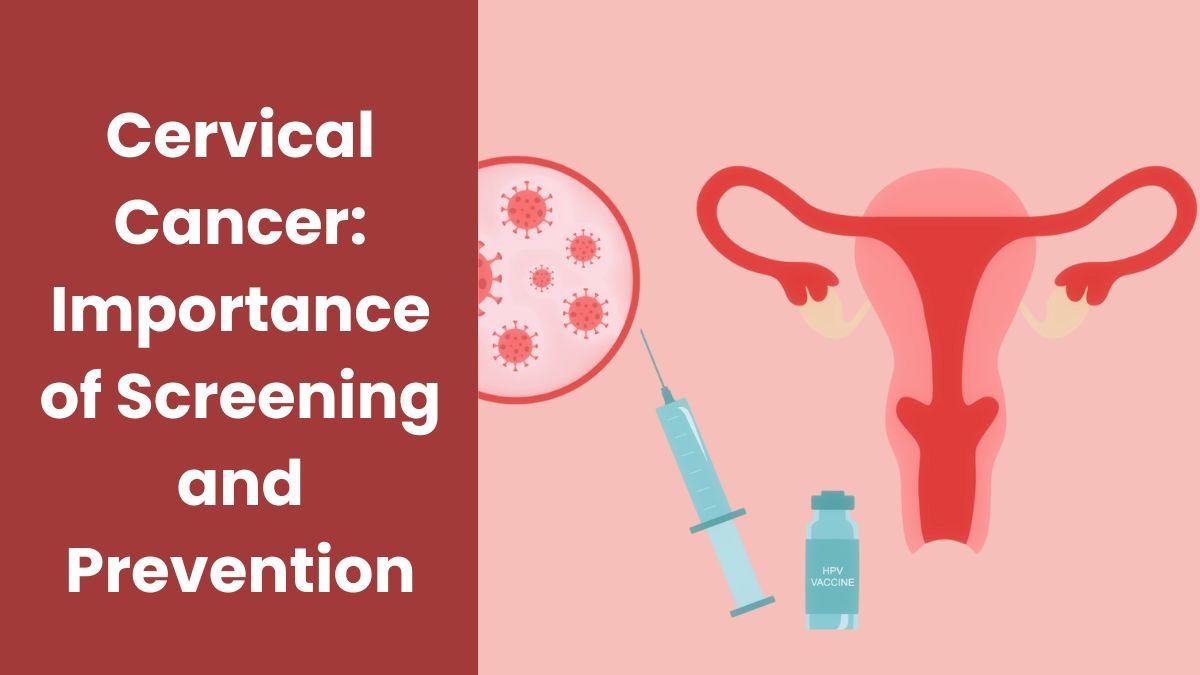Introduction: In today’s modern era where the medical field has come a long way, there are still some diseases whose name creates an atmosphere of fear and anxiety. Cervical cancer is one such disease. But the good thing is that this cancer is preventable, if timely screening is done and preventive measures are taken.
This article is specially dedicated to women’s health and awareness in which we will give detailed information about the causes, symptoms, screening, prevention and vaccination of cervical cancer.
What is cervical cancer?
Cervical cancer arises in the lower part of the uterus called ‘Cervix’. This part connects the vagina and uterus. Infection is the greatest risk factor of this cancer and it is called Human Papilloma Virus (HPV). This virus is transmitted through sexual means. In spite of the extreme prevalence of this virus, its certain types can endanger and lead to cancer.
What causes cervical cancer?
- HPV infection: Major causes.
- Having sex at an early age
- Having multiple sexual partners
- Smoking and tobacco consumption
- Weak immune system
- Long-term use of contraceptive pills
- Unhygienic sex
Symptoms: This cancer grows silently
The early stages of the cervical cancer do not produce any particular symptoms, so this is why the disease may last long undetected. However, with the progress in the disease, some manifestations can occur:
- Abnormal bleeding between periods
- Bleeding after intercourse
- Foul-smelling vaginal discharge
- Pain in the pelvis
- Frequent urination or pain
- If any of these symptoms persist for a long time, then a doctor should be contacted immediately.
Screening: Identify the danger in time
Timely screening of cervical cancer is the biggest weapon in saving lives. If it is detected in the early stages, its treatment is simple, cheap and effective.
What are the screening tests?
Pap Test In this test, a sample of cervical cells is taken and examined under a microscope. If the cells look abnormal, they are considered ‘precancerous’ which can become cancerous without treatment.
HPV Test In this, it is checked whether dangerous strains of HPV virus are present in the cervix or not.
How often should screening be done?
- Women aged 21 to 29 years should get Pap test done once every 3 years.
- Women aged 30 to 65 years should get both HPV and Pap tests done every 5 years.
- After 65 years, if all the tests have come normal in the last 10 years, then the tests can be stopped.
- If a woman has undergone hysterectomy (removal of uterus including cervix) and there has been no cancer or precancer, then the test is not required.
Vaccination: A solid protection
There is also a vaccine to prevent the HPV virus that is available and does not only prevent cervical cancer but also genital warts and other types of cancer (throat, anus, vagina, penis).
What and when will the vaccine be administered?
- 2 doses with a spread of 6 to 12 months between the age of 9 to 14.
- The three doses are administered at ages 15 to 26; the second dose is administered after 2 months of the first dose; and the third dose is administered after 6 months.
- It is best taken prior to sexual intercourse starting, although sexually active individuals would also find benefit to using the vaccine.
Could condoms help with preventing HPV infection?
The use of condoms reduces the risk of HPV infection to some extent, but it does not provide complete protection because:
- HPV can be spread not only through vaginal contact, but also through skin contact.
- Condoms do not cover all parts of the body.
- The virus can also be spread through oral, anal and genital contact.
- So while condoms are a helpful measure, the main protection is vaccination and screening.
Lack of awareness: A big challenge
While cervical cancer mortality has decreased by more than 50% in developed countries due to the availability of Pap tests and HPV vaccines, the disease still remains a major cause of death among women in developing and low-income countries.
In a country like India, most women:
- Are not aware of screening
- Are victims of misconceptions about vaccination
- Are not able to get tested due to economic or social reasons
- If all women get tested and vaccinated on time, cervical cancer can be almost eliminated.
Social and family role:
- The role of society and family is very important regarding women’s health. It is important that:
- Families encourage women to get tested
- Girls should be vaccinated in adolescence
- Awareness campaigns should be run at school and college level
- Women should be made to understand that it is not a ‘shame’ or ‘stigma’ but a common and preventable disease
Conclusion:
Cervical cancer is a disease that can be completely prevented through timely testing, vaccination and awareness. It is important for every woman to prioritise her health and move forward with knowledge and determination rather than fear or hesitation.If we all take steps to prevent it today – the government, health services, families and women themselves – then in the future this disease will remain confined to medical books only.
